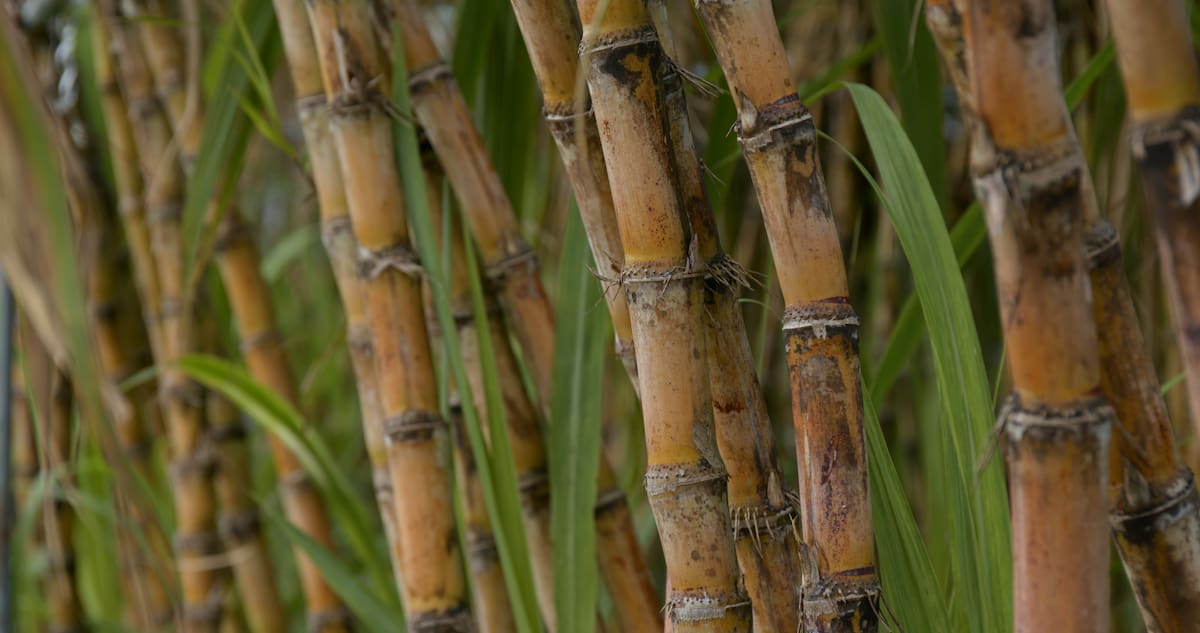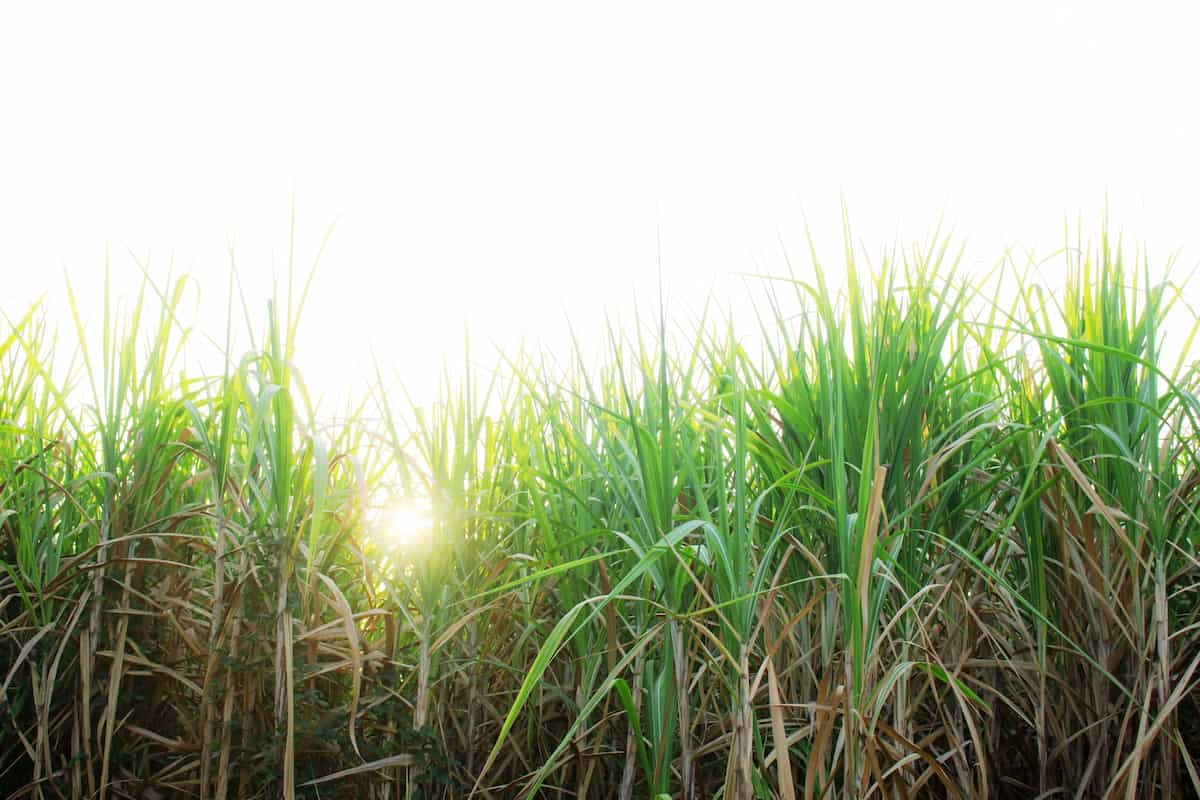The grassy shoot is a devastating disease that affects sugarcane, caused by phytoplasma. The disease is characterized by the formation of abnormal tillers, known as grassy shoots, which are characterized by excessive vegetative growth, reduced internode length, and narrow leaves with a pale green coloration.

Infected plants may produce up to 20 grassy shoots, reducing cane yield and quality. Stunted growth, abnormal tiller development, and tiny, narrow leaves indicate grassy shoots. Black hoppers, which feed on sugarcane phloem sap, spread the disease.
Chemical, biological, natural, and organic methods can control sugarcane grassy shoot disease. Insecticides stop black hopper disease spread. Lacewings and ladybugs are used in biological black hopper control. Resistant cultivars help manage grassy shoot disease naturally. Organic Black hopper control uses plant extracts and biopesticides like neem oil and Bacillus thuringiensis.
Grassy Shoot Management in Sugarcane
The Causal Organisms of Grassy Shoot Disease
Grassy shoot disease in sugarcane is caused by phytoplasma, bacterium-like organisms that can be transmitted via infected seed material (setts) and phloem-feeding insects such as leafhoppers and aphids. In infected plants, ultrathin sections of phloem cells reveal the presence of spherical bodies with a diameter of 300-400 nm and filamentous bodies with a diameter of 30-53 mm.
Dodder, a root parasite, can also serve as a transmission vector. The disease can also be mechanically transmitted via contaminated cutting instruments. The phytoplasma infects the phloem tissue of the sugarcane plant, causing unusual tiller development and a reduction in internode length. The disease can significantly reduce the yield and quality of sugarcane.
The Disease Cycle of Grassy Shoot Disease
Sugarcane, a grassy shoot disease, can survive and spread through various mechanisms. The principal transmission mode is infected seed material (setts), which propagates the disease via ratooning. The phytoplasma that causes the disease can also be transmitted via sap inoculation and contaminated cutting tools. In addition, phloem-feeding insects such as aphids and black hoppers serve as vectors for the disease’s transmission.
The root parasite dodder can also transmit the disease. The grassy shoot disease cycle involves the transmission of the phytoplasma via infected seed material and the propagation of the disease via ratooning. In addition to mechanical transmission, the disease can be transmitted via phloem-feeding insects and fodder.
Causes/conditions Favorable for Grassy Shoot Disease in the Field
Grassy shoot disease in sugarcane is mostly transmitted by planting infected setts. The black hopper insect (Browtista moesta) can also serve as a disease transmitter. Alternate hosts for the disease are sorghum and maize, and the symptoms can resemble those of iron deficiency, but only in random and isolated areas of the field.
Symptoms of Grassy Shoot Disease
- The proliferation of vegetative buds at the base of the cane produces large groups of tillers with slender leaves.
- leaves ranging from pale yellow to completely chlorotic on tillers
- Cane formation is uncommon in affected clusters, and when it does occur, the canes are thin and have short internodes.
- juvenile leaves with pallid and slender new growth (3-4 months)
- All newly developing tillers are white or yellow, giving the plant a verdant appearance.
- Stunted clusters with an early proliferation of supplementary buds
- Side emergence and yellowing of mature canes caused by secondary infection
- Diseased plants from infected setts cannot produce millable canes, causing ratoon gaps.
- Canes are formed; thin canes with shortened internodes and papery, abnormally elongated buds will be formed.
In case you missed it: Rust Management in Sugarcane: Symptoms, Identification, Treatment, Chemical, Biological, Natural, and Organic Control

Percentage of the Yield Loss Due to Grassy Shoot Disease in Sugarcane
Sugarcane grassy shoot disease (SCGS), caused by ‘Candidatus Phytoplasma sacchari’, small, pleomorphic, pathogenic bacteria, can cause yield losses ranging from 5% to 20% in sugarcane crops, with higher losses observed in ratoon crops.
Grassy Shoot Management in Sugarcane by Cultural Method
Sugarcane Grassy Shoot Disease can be managed through various cultural and physical methods. Cultural techniques include cultivating resistant varieties and averting ratooning if the incidence of GSD in the plant crop exceeds 15%. Physical methods for primary infection include roguing out infected plants in the secondary and commercial seed nurseries and treating setts with aerated steam at 50°C for one hour. In addition, treating the plants with heated air at 54°C for eight hours and applying aphidicides twice a month can effectively control the disease.
Grassy Shoot Management in Sugarcane by Biological Method
Applying predators and parasitoids that attack the insect vectors of the disease, such as aphids and leafhoppers, allows for biological control of Grassy Shoot Disease in sugarcane.
Grassy Shoot Management in Sugarcane by Chemical Method
The primary chemical control method is using insecticides, such as aphids and leafhoppers, to control the transmission vectors of Grassy Shoot Disease in sugarcane. While there is no direct chemical control for the disease, regular application of insecticides such as dimethoate or methyl-demeton can reduce the number of insects carrying phytoplasma. The recommended dosages for dimethoate and methyl-demeton are 1 ml/liter of water and 2 ml/liter of water, respectively.
Grassy Shoot Management in Sugarcane by Organic/natural Method
Organic control of Grassy Shoot Disease in sugarcane involves the management of aphid and black hoppers vectors. Organic insecticides, such as soft insecticidal soap and plant oil-based solutions, can be utilized in moderate infestations. These techniques effectively reduce aphid populations and prevent the spread of the disease. In addition, effective cultural management techniques, such as crop rotation and maintaining healthy soil, can help reduce stress on sugarcane plants and make them less susceptible to diseases such as Grassy Shoot.
In case you missed it: Wilt Management in Sugarcane: Symptoms, Identification, Treatment, Chemical, Biological, Natural, and Organic Control

Preventive Measures for Control of Grassy Shoot Disease
Farmers should use healthy seed material and sow disease-resistant varieties. Before sowing, infected seeds can be treated with hot water, moist air, or antibiotics. Detecting disease symptoms and insect vectors requires field tracking. Remove and destroy affected plants promptly. Yellow sticky traps can manage aphids. Crop rotation can also lower field inoculum.
Conclusion
Sugarcane growers face 20% yield losses from grassy shoot disease. Insects spread phytoplasma: resistant varieties, field monitoring, and seed treatment control. Chemical, biological, and natural means like insecticidal soap can be used.
- Deworming Schedule for Dogs/Puppies: A Beginners Guide
- How to Prevent and Control Parasites in Goats
- Beneficial Insects in Pest Management
- Natural Solutions for Pest Control in Flower Gardens
- Types of Fungicides Used in Agriculture
- Common Issues in the Fruit Development Stage of Pomegranate Farming
- Fruit Development Issues in Papaya: Easy Solutions and Treatment
- Soil-Borne Diseases and How to Protect Your Plants
- Practices to Prevent Disease Spread in the Garden